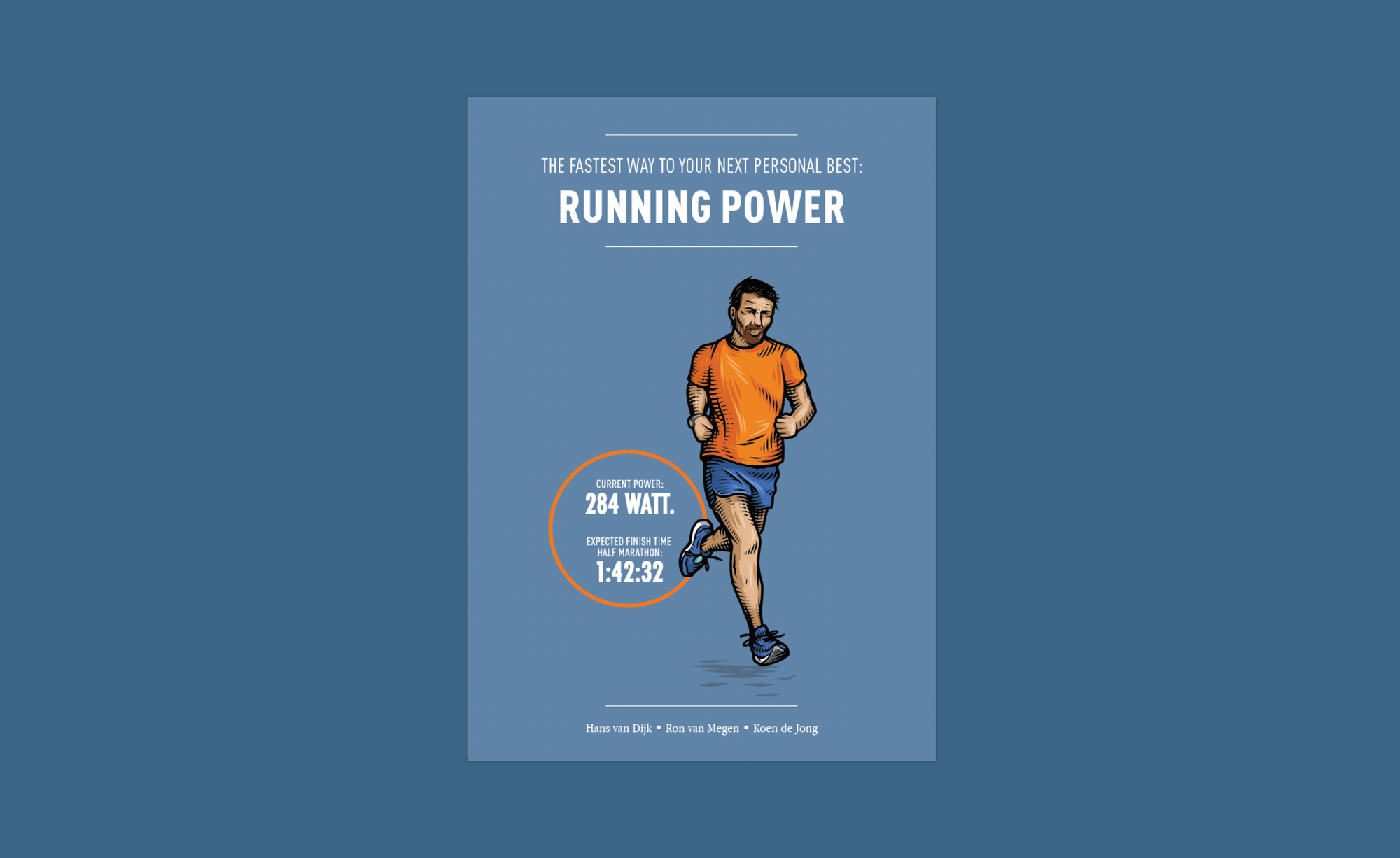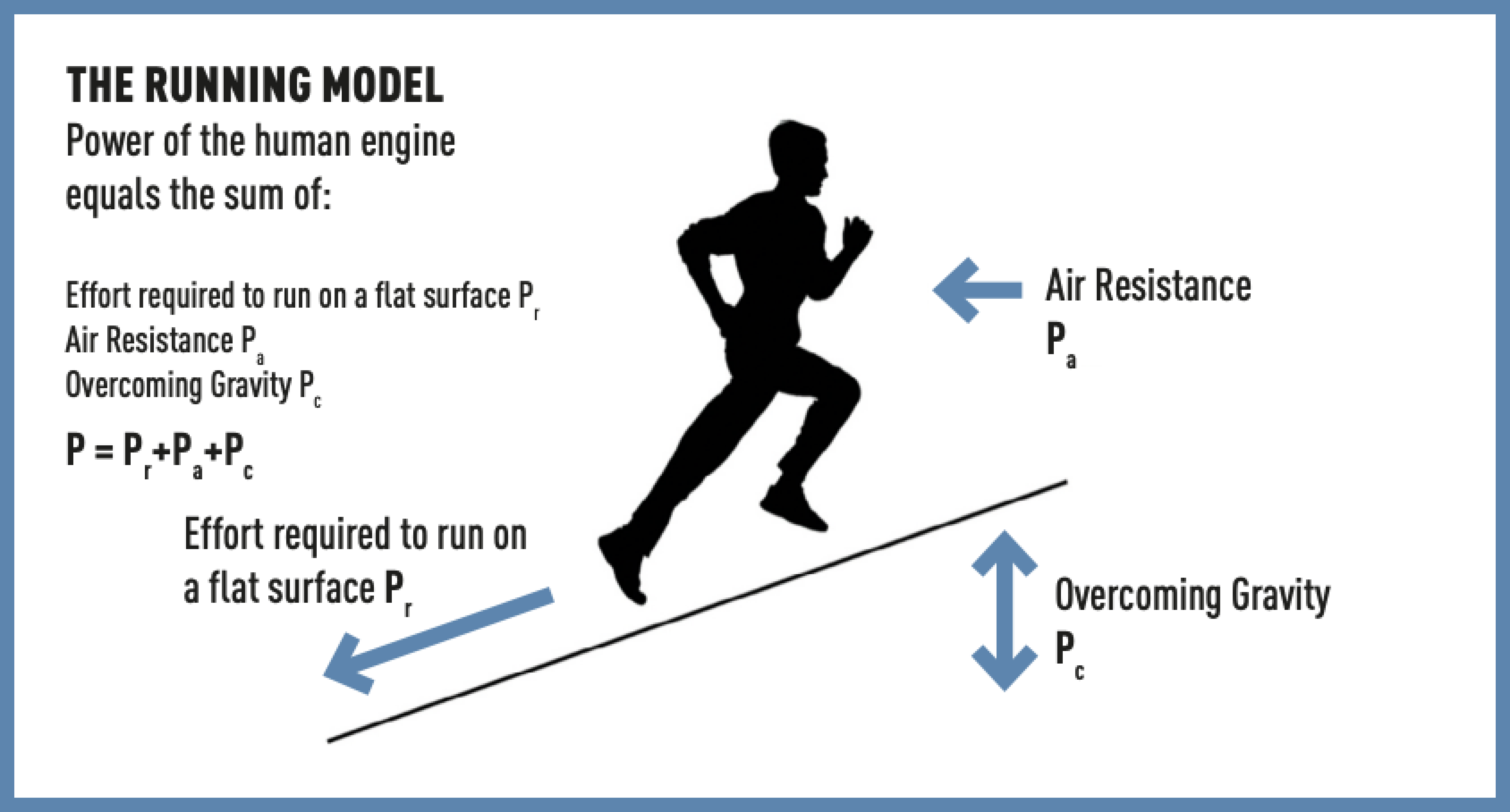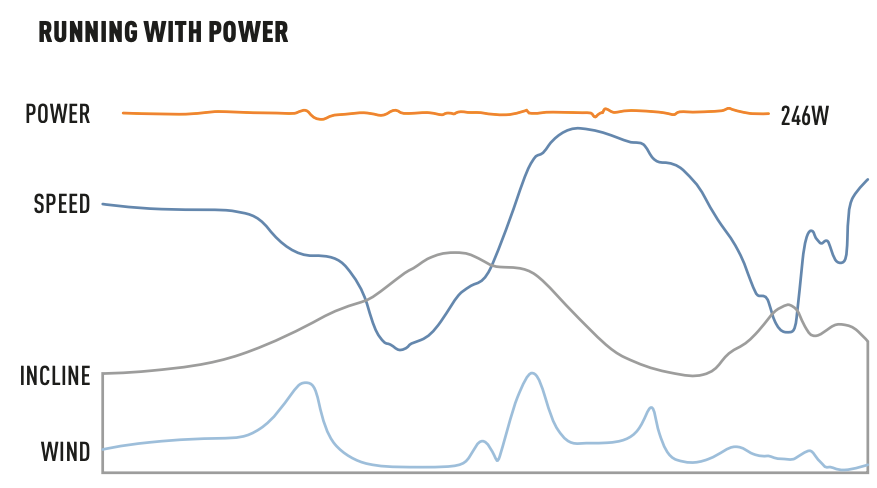What is Running Power?

After many poor grades and frustrating struggles, I was happy to be able to drop physics in the ninth grade of high school. I’ll take languages over the hard sciences any day!
What I am interested in (in addition to languages) is running, making how to progress transparent, and finding ways to improve my sports performance.
To train with power, you don’t even need to know what a watt is. Even without knowing, you can improve personal records and make progress. For example, you don’t need to know how the Internet works to use it. If you know to enter the URL for your favorite news website, you’ll automatically see the news of the day, even without knowing how it’s possible that you can access the Internet from nearly any place in the world. It’s exactly the same with wattage from your running power. You can work with it, without knowledge of power itself and without knowledge of how said power is measured. As long as you know at what level of power you have to run in a training session, or at what level of power you can run during a 5K, 10K, or half or full marathon, you will make progress.
If you’re not yet convinced of the usefulness of power training, it’s instructive to know what power meters actually measure, how they do it, and what the differences are with heart rate measurement.
A watt is a physical unit of measurement used to indicate power, which is the amount of energy consumed per second. Energy is represented by the unit, Joule. Calories may be something you are familiar with from food. Joules are simply an alternative way to represent energy. Let’s take a look at some energy and power values that we may be familiar with.
A kcal is equal to 4.184 kilojoules. Nutritionists tell us that we consume (roughly) 2500 kcal per day, which corresponds to 10,460 kJ. In addition to kcal and kJ, we also recall energy consumption as kilowatt hours (kWh) when tracking use of electricity. 1 kWh equals 3600 kJ. So, we can say that the energy value of our daily food corresponds to 10,460 / 3,600 = 2.9 kWh. That’s not much. Especially when we consider that 1 kWh costs approximately $0.12. If we were to eat electricity, we would only need to pay 2.9 * 0.12 = $0.35 to cover our needs each day.
How do we make use of this knowledge?
In his article appearing in Outside, author Alex Hutchinson nicely describes why we’re all interested in calories, even if we just don’t know it yet. Why should you care? It’s a matter of terminology, says Hutchinson. If you do a sports performance test having your VO2 max determined with advanced equipment, you’re actually also measuring calories. Oxygen uptake is measured, as it is a good measure of energy consumption. And if you use this data to determine your heart rate zones and where your anaerobic threshold is, then you use your heart rate as a proxy for energy use; in other words, calories. And even for runners who run by feel (without a heart rate monitor), you could argue that they rely on their perception of how quickly they burn calories and how long they last. In short: knowing your use of calories plays a big role in your preparation for a new PR.
When we run, a chain reaction of physical activity takes place. Our heart rate increases, our lung capacity is used to a greater extent, our muscles are switched on, and blood flow accelerates. You can think of the human body as a complex miracle where 100,000 billion cells intelligently work together. But you can also represent the function of the human motor, the muscles and the heart-lung function, which can deliver a certain power, in a number expressed in watts.
We all know that running takes energy. And it makes sense that it takes more energy to run a marathon as fast as possible, than it does to run 5 kilometers at your leisure. You can express the energy you use in kilojoules, or kJ.Watts are the number in which your energy consumption per second is expressed. You can imagine a runner as a machine that extracts energy from food and converts it into valuable fuels for running. There is one problem: no machine is perfectly efficient, and neither is your body. You never get as much energy from your body as you put into it. For example, a car is only 25% efficient. If your car has used 100 joules of gasoline energy, only 25 of these joules have been used to propel the car forward, while the remaining 75 joules have been converted to useless heat.
Your muscles are also around 25% efficient, under normal circumstances. But that depends, among other things, on training, stride length, ground contact time, temperature, and more. Together with your weight, your energy consumption and your power are therefore a golden combination to predict how fast you can run at certain distances. Because if you know how much power your body can deliver, you also know what your body can do to push your weight in a given direction at a certain speed.
“Power is the amount of energy per second it takes to propel your body in a particular direction”
Ron and Hans have created a clear model to describe running power:

This model looks simple, but is based on complicated formulas. For example, the air resistance depends on, among other things, wind speed, temperature, air pressure, height above sea level, and your body size. You’ll also notice that the air resistance is different when you walk alone or in a group, where you’re (partially) sheltered from air flows
The Amsterdam Beach Marathon is the most famous half marathon in the Netherlands. You start on the beach near Amsterdam, and halfway, you turn off the beach, back through the dunes. A very tough section, where the runners on the beach were facing strong winds, however was an excellent opportunity for Hans and Ron to test the Stryd power meter in strong winds. A running friend of theirs - Niels - ran this section of De Halve van Egmond with Stryd, and the results were interesting.
What happened?
On the beach and running against strong wind, it turned out that Niels had to deliver an average of 40 watts to overcome the wind while running, delivering power peaks of more than 70 watts. Running with a constant power, you can imagine that your speed will be quite a lot slower if the wind alone requires an extra 40 watts to overcome. Niels ran consistently at 270 watts, a wattage that he knew he could sustain for a half marathon. His pace was 8:05 min/mile in the strong headwind and (with the same power!) as compared to the pace he ran with a tailwind, that being 7:00 min/mile. His run time: 1:36:28. By running with constant power, he knew exactly what to do in the strong wind. If he was measuring heart rate, this wouldn’t have worked out nearly as well, because heart rate always needs a little time to climb to a steady and reliable number. Running with pace would not have been possible at all, because he could never have known how much slower he’d have to run against the headwind. This example clearly shows how running with power works well in strong winds (and also on hilly terrain).

This model looks simple, but is based on complicated formulas. For example, the air resistance depends on, among other things, wind speed, temperature, air pressure, height above sea level, and your body size. You’ll also notice that the air resistance is different when you walk alone or in a group, where you’re (partially) sheltered from air flows.
The great thing about power is this: all these conditions can be captured in only one single number: your power. And if you know at what level of power you need to run to get better, you will improve quickly. Altitude, wind, temperature, speed, heart rate, and air pressure: all of these variables affect the total time of an event. Of course, you can’t constantly keep an eye on all of these variables. When the weather gets warmer or when you walk up a hill or a bridge, it affects your heart rate and your pace. Should you mainly pay attention to your heart rate or your pace? And in warmer weather, is it better to run with a higher heart rate, a lower heart rate, or the same heart rate you run with in cold weather?
These questions are difficult to answer. And, during an event, it’s too complicated to attempt to take all of these variables into account. The big advantage of running with power is that you only have to keep an eye on this one simple to understand number that takes everything into account: altitude, temperature, speed, wind, humidity, and air pressure. The following graph clearly shows the benefits of running with power. While all variables can freely change, you can simply keep your power level at a constant number.
And the best part is: this predictor is accurate across all distances. So if you run 3 kilometers as fast as possible once, you get a very accurate picture of what’s possible for a 10 kilometer race, half marathon, or full marathon. For example, if you look at your wattage instead of your speed, you’ll also know exactly how much slower you would have to run against a wind or on an uphill. Better yet, even downhill, you can see exactly at what level of power you should run to keep your wattage at the right intensity. Power allows you to clearly see your progress, regardless of whether you primarily run on a running track or in a forest or on a hill. Sure, this all sounds good. But doesn’t heart rate measure your progression and the capability of your body too?

Want to learn more about Running Power?
Download The Fastest Way To Your Next Personal Best: Running Power eBook (with over 65+ pages of content) for free to learn simple ways you can use power to improve your running performance.
Click here to download. Enjoy the book!

